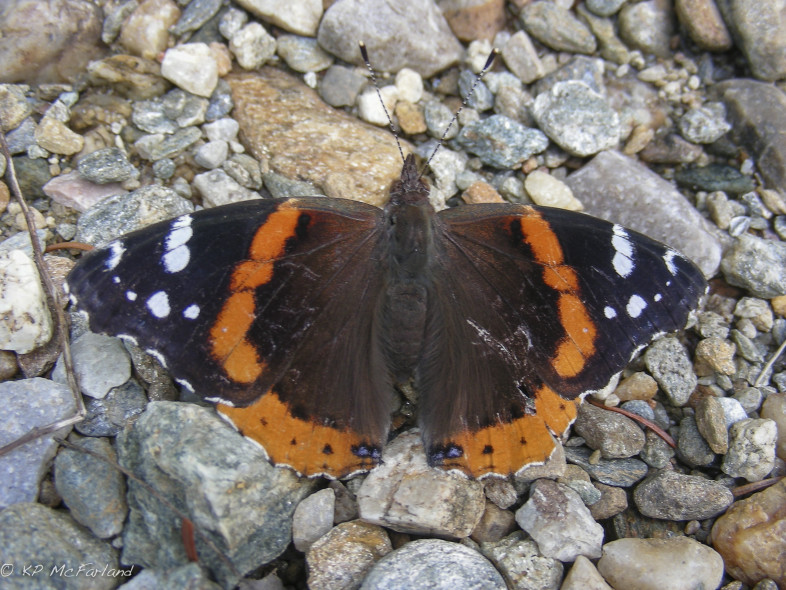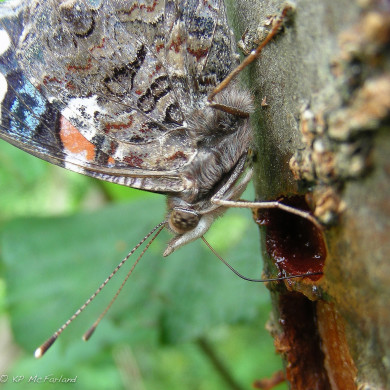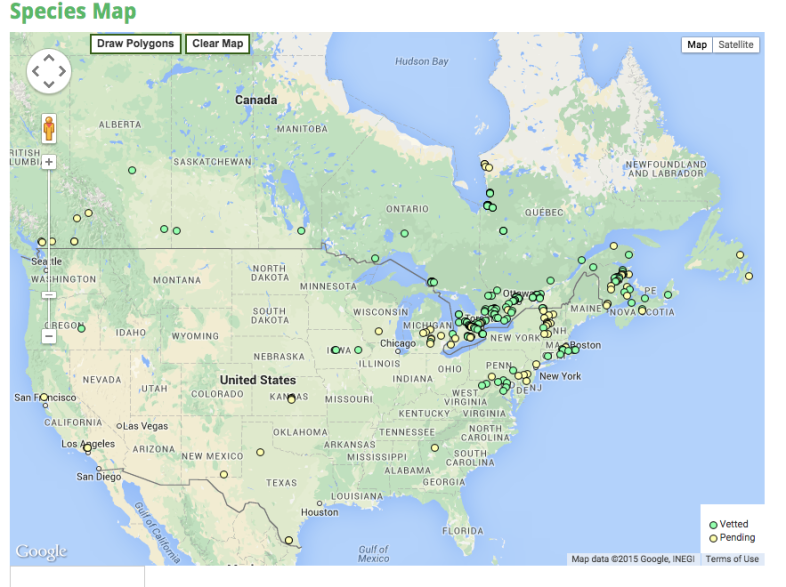
Red Admiral sunning on a gravel road in Vermont. /© K.P. McFarland
Drifting in a boat several miles out in the Gulf of Maine, Chris Rimmer, director of the Vermont Center for Ecostudies, didn’t expect to see any butterflies. It was a warm July afternoon (well, for the coast of Maine) and Chris didn’t expect to see many birds either. But to his surprise, through his binoculars, he clearly spotted a Red Admiral cruising southward on the light breeze. There was not just one aberrant butterfly; he was able to spot five. Where had they come from and where were they going? Unlike the migratory Monarch populations in North America, there is no single overwintering location known for the Red Admiral. During migrations, they can be found in almost any habitat from tundra to the subtropics.
Red Admirals can’t survive the cold winters in the northern regions. Each fall they flee south, spending the winter in the deep-south. When spring comes, new generations begin migrating northward, repopulating northern regions once again. Usually, it’s a migration that goes unnoticed by most people. Big flights, with millions of Red Admirals winging along, happened in the Northeast in 1990, 2001 and most recently in 2012. The spring migration of 2012 was unprecedented.

Red Admiral feeding on tree sap in holes from a Yellow-bellied Sapsucker in Killington, Vermont. /© K.P. McFarland
Estimates from the field suggest there were 300 million Red Admiral butterflies from Windsor, Ontario over to New Brunswick — more than 10 times what would be seen in a typical year remarked Jeremy Kerr, a professor of biology at the University of Ottawa and one of eButterfly’s founders. The Red Admirals moved so far north so early that they flew into areas with snow, something that normally wouldn’t ever happen.
The female Red Admiral lays greenish eggs on a host plant, usually a nettle (imagine eating a mature stinging nettle leaf). The caterpillar encases itself inside a host plant by wrapping the leaf in silk. It then feeds on the leaf. In colder climates, they may have only one brood. In warmer climates, it may have as many as three broods, where it can live year-round.
These spring and fall migrations are still wrapped in mystery. But with all of us contributing our sightings of Red Admirals and other butterflies to e-Butterfly, we may be able to learn more about these movements through the power of big data.

Red Admiral sightings reported to e-Butterfly in June – July 7.
